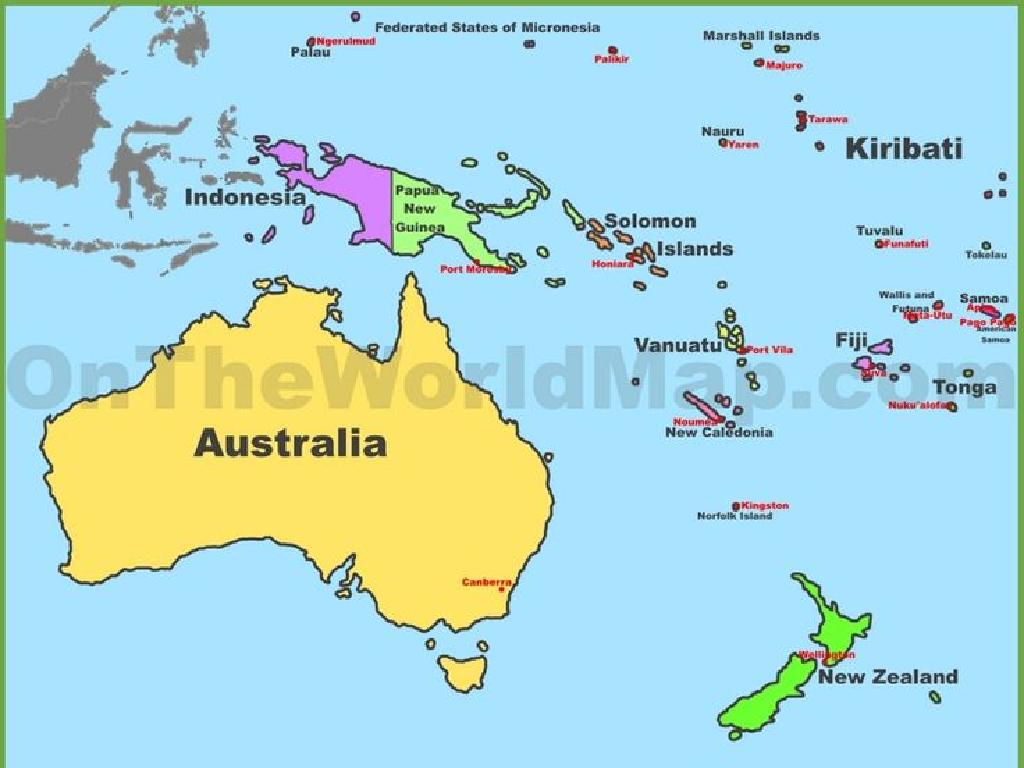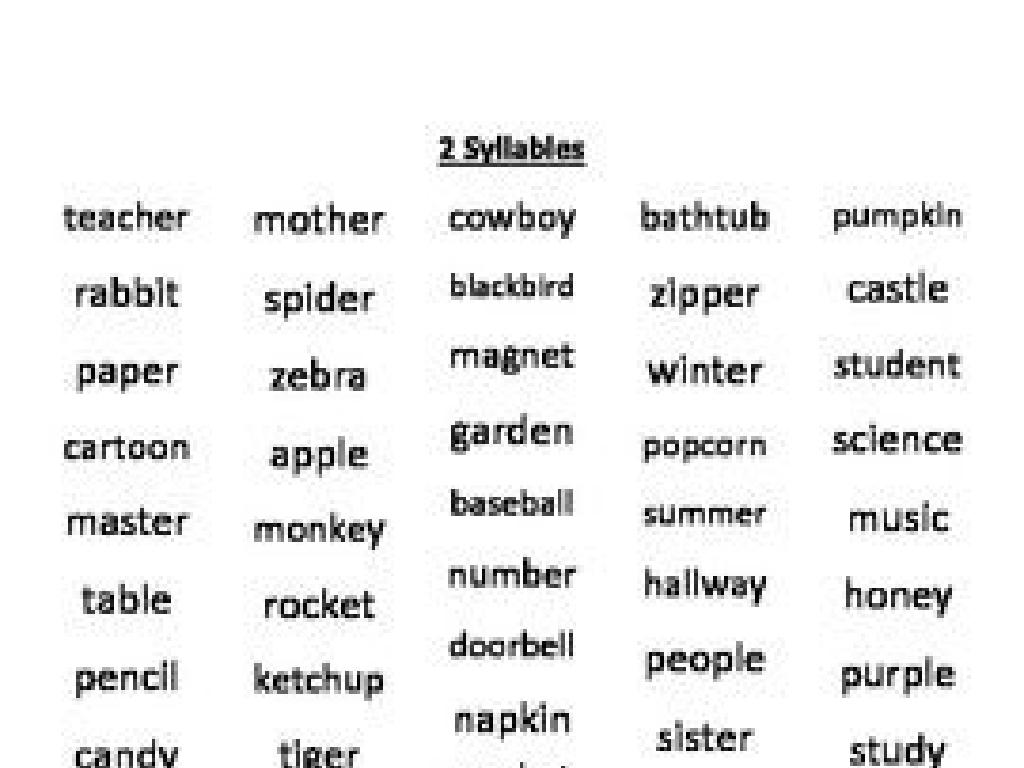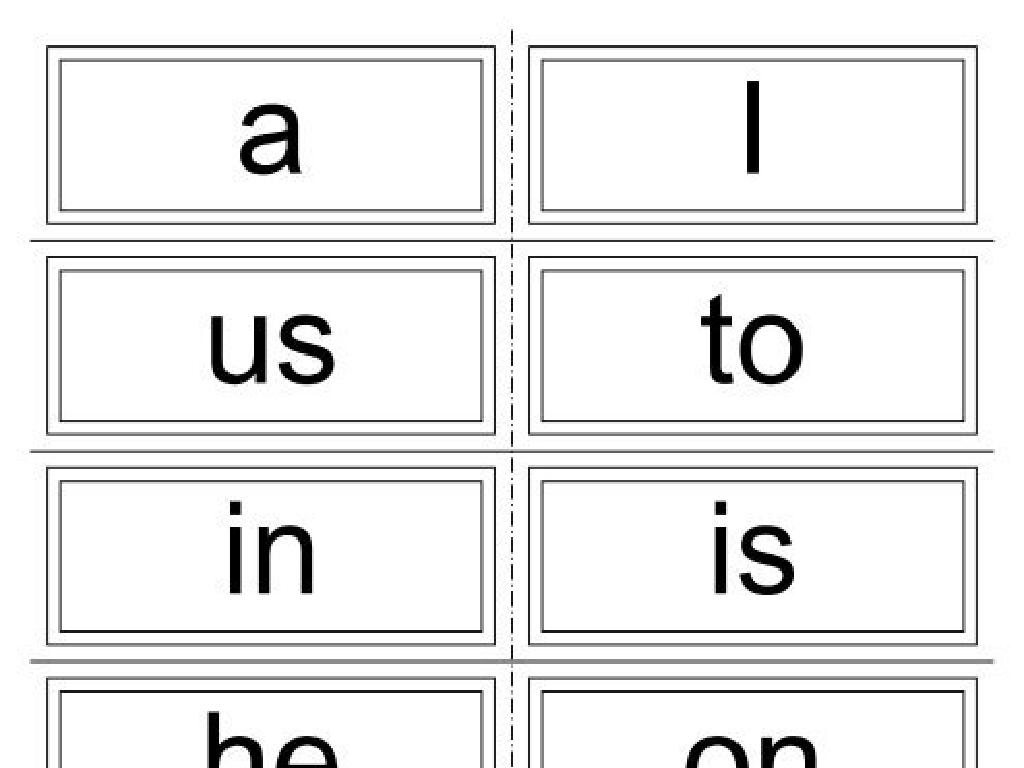Calculate Velocity From Time And Distance
Subject: Science
Grade: Eighth grade
Topic: Chemical Reactions
Please LOG IN to download the presentation. Access is available to registered users only.
View More Content
Chemical Reactions & Velocity
– Understanding chemical reactions
– A process where substances change into new substances.
– Role of velocity in reactions
– Faster-moving molecules react quicker, affecting velocity.
– Reaction rates in real life
– Everyday examples: rusting iron, baking bread.
– Calculating velocity
– Velocity = distance/time. How fast reactants turn into products.
|
This slide introduces the concept of chemical reactions, emphasizing the importance of understanding how substances transform during these processes. It’s crucial to explain that the speed at which molecules move (velocity) can significantly impact how quickly reactions occur. Provide relatable examples such as the rusting of iron or the rising of dough when baking bread to illustrate reaction rates. Conclude by showing how to calculate velocity, which is essential for predicting reaction rates. Encourage students to think about how temperature and concentration might affect the velocity of chemical reactions.
Understanding Velocity
– Velocity: speed with direction
– Measure of how fast something moves in a specific direction
– Speed vs. Velocity: what’s different?
– Speed is scalar; velocity is vector with magnitude and direction
– Calculating Velocity: Distance ÷ Time
– If a car travels 100 meters in 5 seconds, its velocity is 20 m/s to the north
– Velocity’s role in chemical reactions
|
Velocity is a fundamental concept in physics that also plays a significant role in understanding chemical reactions. Begin by defining velocity as speed in a given direction, which is a vector quantity. Contrast this with speed, a scalar quantity that does not include direction. Emphasize the formula for calculating velocity (velocity = distance ÷ time) with an example to solidify understanding. Discuss how velocity can affect the rate and direction of chemical reactions, such as in the case of collision theory where the speed and direction of reacting particles can influence the reaction rate.
Calculating Velocity in Motion
– Velocity formula: distance/time
– Units for velocity: meters/second (m/s)
– Example: Calculate a car’s velocity
– If a car travels 100m in 5s, its velocity is 20 m/s.
– Direction matters for velocity
– Velocity is a vector; it includes speed and direction.
|
This slide introduces the concept of velocity within the broader topic of motion, which is a part of the physical science curriculum. Start by explaining the formula for velocity, which is the distance an object travels divided by the time it takes. Emphasize that velocity is different from speed because it includes direction, making it a vector quantity. Use relatable examples, such as a car’s movement, to illustrate how to calculate velocity. Explain that the units for velocity in the International System of Units (SI) are meters per second (m/s). Highlight the importance of direction by comparing it to speed, which is scalar and does not include directional information. Encourage students to think of scenarios where direction changes the outcome of a situation, like running a race in the wrong direction.
Velocity in Chemical Reactions
– Impact of velocity on reaction rates
– Faster particles increase the rate of reaction by colliding more often.
– Understanding collision theory
– Atoms, ions, and molecules must collide to react, influenced by their velocity.
– Factors affecting particle velocity
– Temperature, concentration, and surface area affect how quickly particles move.
– Calculating reaction velocity
|
This slide introduces the concept of velocity within the context of chemical reactions, emphasizing its role in determining reaction rates. Velocity affects how often particles collide, which is the basis of collision theory. The theory posits that only collisions with sufficient energy and proper orientation lead to a reaction. Students should understand that increased velocity leads to more frequent and energetic collisions, thus increasing the reaction rate. Factors such as temperature, which provides kinetic energy to particles, concentration, which increases the number of particles in a space, and surface area, which provides more area for collisions, all influence the velocity of reacting particles. The slide concludes with an introduction to the mathematical calculation of velocity, which is the distance traveled divided by the time taken, and how this concept can be applied to understand reaction rates in chemical processes.
Calculating Velocity in Chemical Reactions
– Calculate velocity: distance/time
– Velocity = Total distance covered / Time taken
– Determine reaction time
– Given distance & velocity, find time
– Analyze velocity’s effect on rate
– Faster velocity may increase reaction rate
– Practice problem examples
|
This slide is aimed at providing students with practice problems to understand the concept of velocity within the context of chemical reactions. Students will apply the formula for velocity, which is the total distance covered divided by the time taken. They will also learn to determine the time needed for a reaction to complete when given distance and velocity, and analyze how changes in velocity could affect the rate of a reaction. Encourage students to consider factors that might affect velocity and reaction rate, such as temperature and concentration. Provide examples for practice, such as calculating the velocity of a reactant or the time it takes for a product to form.
Class Activity: Measuring Reaction Velocity
– Gather all required materials
– Follow the experiment steps carefully
– Record time and distance data
– Note the start and end points of reaction
– Calculate the reaction’s velocity
– Use the formula velocity = distance/time
|
This activity is designed to help students understand the concept of reaction velocity by engaging in a hands-on experiment. Provide students with a list of materials needed, such as reactants, measuring tools, and safety equipment. Walk them through the experiment step-by-step, ensuring they understand each part of the process. Emphasize the importance of accurate data recording, as they will use this information to calculate the velocity of the chemical reaction. Teach them the formula for velocity and how to apply it to their recorded data. Possible activities could include varying concentrations of reactants to see how it affects the velocity, or comparing different types of reactions. Ensure that students wear appropriate safety gear and understand the safety procedures for handling chemicals.
Conclusion: Velocity in Chemical Reactions
– Recap velocity calculation
– Velocity = Distance ÷ Time
– Velocity’s role in reactions
– Faster reactant movement may increase reaction rate
– Engage in Q&A session
– Summarize today’s lesson
– Review key points and clarify any misunderstandings
|
As we conclude today’s lesson, we’ll review the formula for calculating velocity, which is the distance traveled divided by the time it took. Understanding velocity is crucial in the context of chemical reactions, as the speed at which reactants move can affect the rate of the reaction. We’ll then open the floor for a Q&A session, giving students the opportunity to ask questions and clarify any doubts they may have. This is also a chance to address common misconceptions and reinforce learning objectives. Finally, we’ll summarize the main takeaways from today’s class to ensure that students have a solid understanding of how velocity plays a role in chemical reactions.
Homework: Velocity and Reactions
– Practice velocity calculations
– Use various scenarios to calculate speed = distance/time
– Observe a home-based reaction
– Find a safe and simple reaction to watch, like vinegar and baking soda
– Record observations carefully
– Note down reaction time and effects
– Study for the upcoming quiz
– Review velocity concepts and reaction rates
|
This homework assignment is designed to reinforce the students’ understanding of how to calculate velocity and observe chemical reactions. Students should practice calculating velocity using the formula velocity = distance/time with different values for distance and time. Encourage them to find a simple and safe chemical reaction to observe at home, such as mixing vinegar with baking soda, and to record their observations, noting the time it takes for the reaction to occur. Lastly, students should prepare for a quiz that will test their knowledge of velocity and reaction rates, ensuring they understand the material covered in class. Provide them with study materials and encourage them to form study groups if possible.






